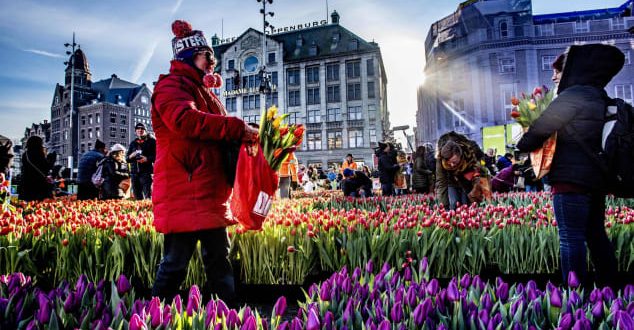Famous for its tolerance as much as its narrow houses and broad canals, Amsterdam is undergoing a radical change of attitude when it comes to the millions of tourists that flock to see it each year.
Tolerance, it seems, has reached its limits in the Dutch capital, which is now actively urging visitors to head elsewhere as frustrated locals complain of feeling besieged by visitors using the city’s bicycle-thronged streets as a travel playground.
“The pressure is very high,” says Ellen van Loon, a partner at Dutch architectural firm OMA who is involved in adapting the city for the future. “We don’t want to turn into a Venice. The problem we are currently facing is that Amsterdam is so loved by tourists, we just have so many coming to the city.”
While Van Loon acknowledges the positive aspects of tourism, which earns the Dutch economy around 82 billion euros ($91.5 billion) a year, like many locals she’s worried that soaring visitor numbers are destroying the soul of this vibrant cosmopolitan city.
Like Venice and other destinations across Europe, Amsterdam has become a byword for overtourism — a phenomenon closely linked to the rise in cheaper air travel that has seen visitors flood certain places, often spoiling the very spot they came to enjoy.
While some cities are still formulating ways to cope, Amsterdam — where a decade-long surge in visitor numbers is forecast to continue, rising from 18 million in 2018 to 42 million in 2030, or more than 50 times the current population — has simply decided it’s had enough.
Netherlands tourist officials recently took the bold decision to stop advertising the country as a tourist destination. Their “Perspective 2030″ report, published earlier this year, stated that the focus will now be on “destination management” rather than “destination promotion.”
The document also outlines the country’s future strategy, acknowledging that Amsterdam’s livability will be severely impacted by “visitor overload” if action isn’t taken.
Solutions listed include working to dissuade groups of “nuisance” visitors by either limiting or completely shutting down “accommodation and entertainment products” aimed at them, as well as spreading visitors to other parts of the Netherlands.
Some of these measures have already come into play.

Last year, the famous “I amsterdam” sign was removed from outside the Rijksmuseum, the city’s main art gallery, at the request of the city of Amsterdam, as it was “drawing too big of a crowd to an already limited space.”
The two-meter high letters have been relocated to various “lesser-known neighborhoods” in a bid to entice travelers away from the center of the city.
Mass tourism has also impacted one of Amsterdam’s other famous symbols, tulips.
While today’s billion dollar trade grew from tulip mania — the 17th century economic bubble, when bulbs sold for more than a year’s wages — Dutch floral fervor hasn’t waned.
“Flowers really belong to our culture, our heritage,” says Florian Seyd, florist and co-founder of Wunderkammer.
But will the measures being put in place to curb mass tourism be enough to save it from being wrecked by its own success?
Like many other locals, architect Van Loon fears that Amsterdam, which came in 23rd place on Euromonitor International’s report on the Top 100 City Destinations in 2018, is dangerously close to losing its unique allure forever.
“The reason tourists come here is because there’s something in the character of Amsterdam they love,” she explains.
“But at a certain point, when the amount of tourists is increasing and increasing, they actually kill what they loved in the first place.”
–
CNN
 UAE BARQ برق الإمارات – نبضك
UAE BARQ برق الإمارات – نبضك



